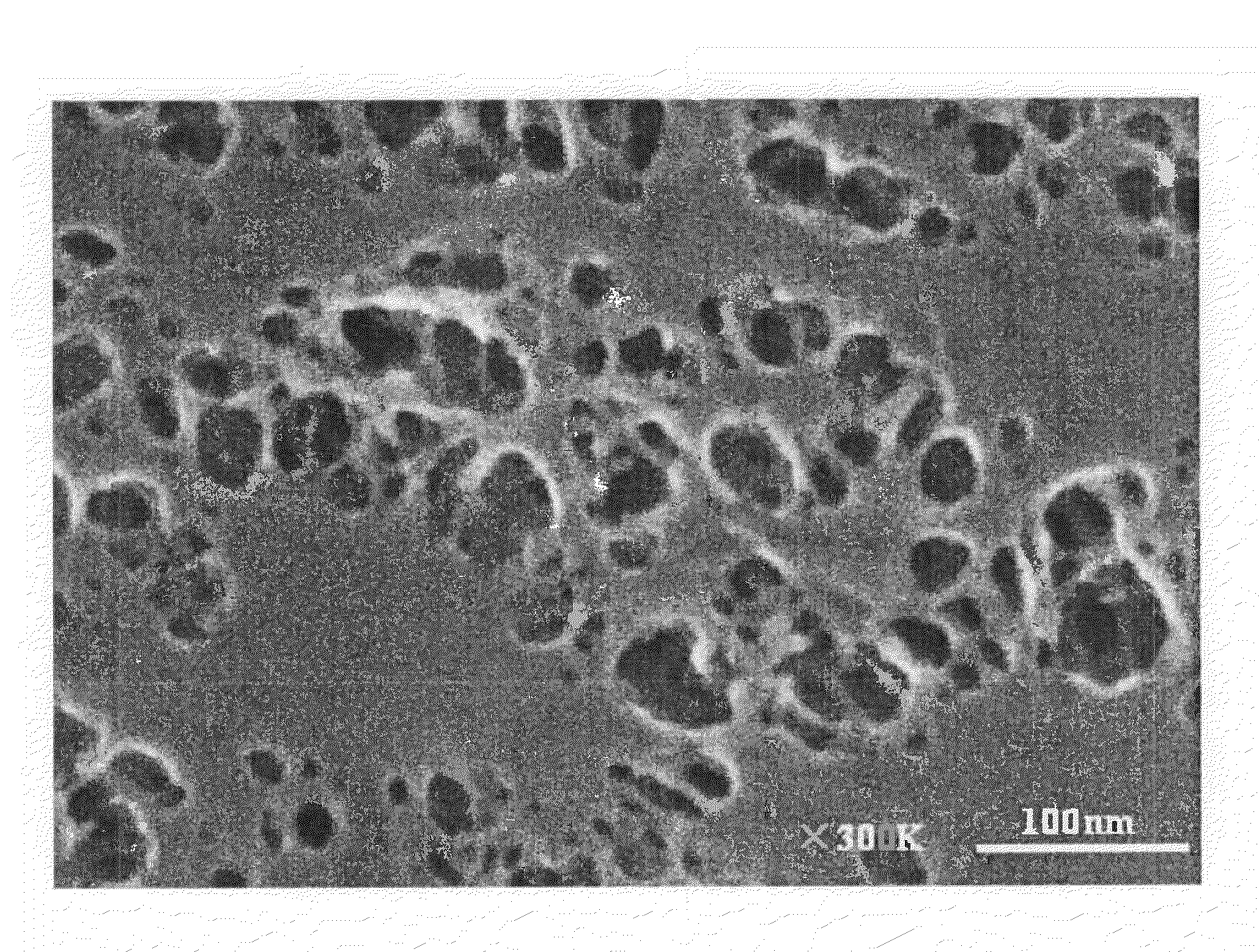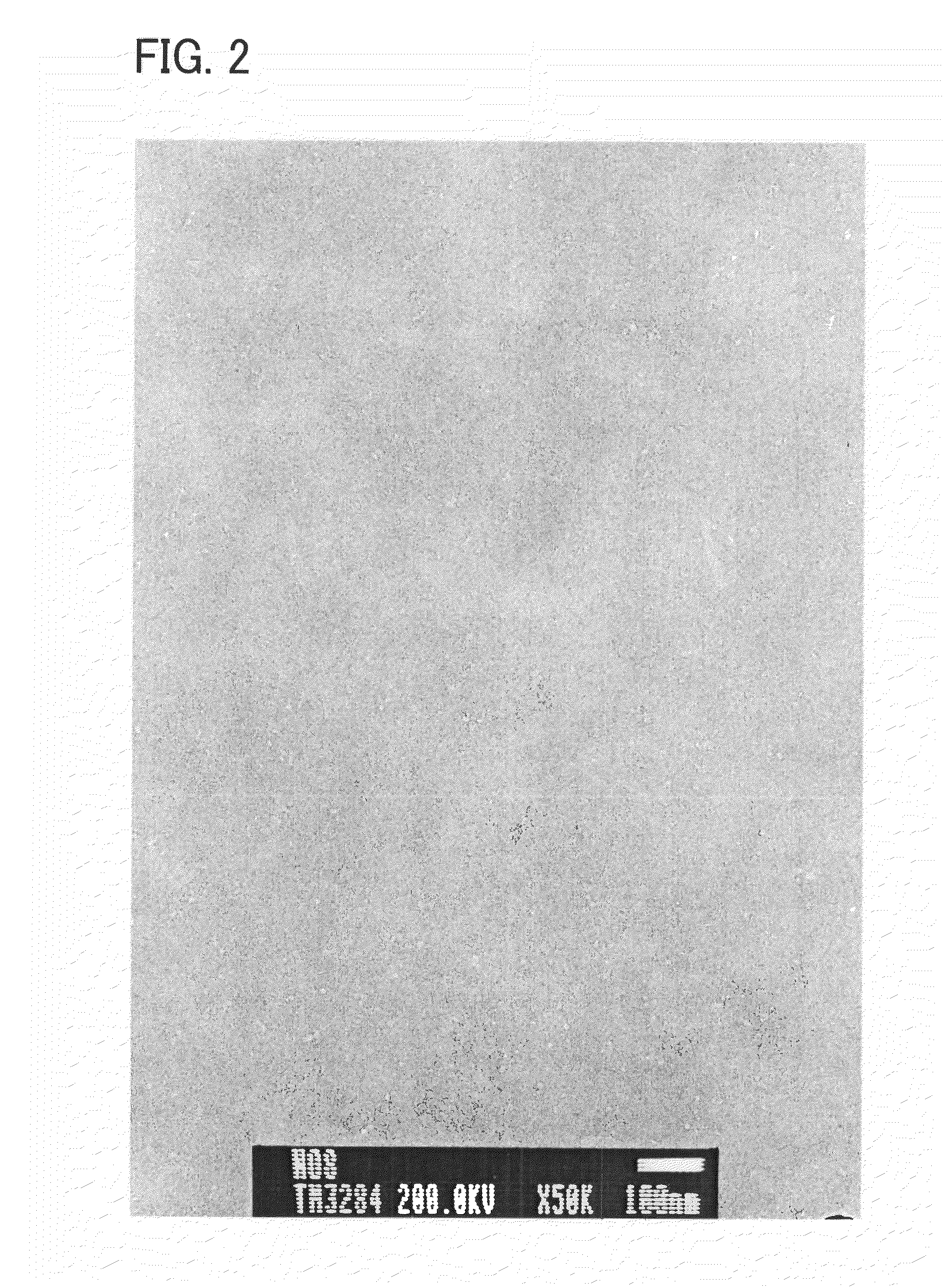Porous polyimide
a polyimide and porous technology, applied in the field of porous polyimide, can solve the problems of remarkable deterioration of mechanical strength, and achieve the effects of low dielectric constant, sufficient mechanical strength, and new structur
- Summary
- Abstract
- Description
- Claims
- Application Information
AI Technical Summary
Benefits of technology
Problems solved by technology
Method used
Image
Examples
examples
[0071]Some Examples of the present invention will be described to clarify the present invention more concretely. It is to be understood that the invention is not limited to the details of illustrated examples and the foregoing description, but may be embodied with various changes, modifications and improvement, which may occur to those skilled in the art without departing from the scope of the invention defined in the attached claims.
[0072]Properties of the resulting films in each of the following Examples was investigated and calculated according to the following methods.
[0073]—Porosity—
[0074]Porosity was calculated by changes of weight and volume of the resulting film between before and after the immersion into HF solution.
[0075]—A thermal decomposition temperature (a 5% weight loss temperature: Td5)—
[0076]A thermogravimetric analysis (TG-DTA) for the resulting film was carried out in an air atmosphere at a heating rate of 10° C. / min. A thermal decomposition temperature (a 5% weig...
examples 1a to 1f
[0085]To a 100 mL three-necked flask equipped with a stirrer, a nitrogen inlet tube, a calcium chloride tube, and a thermometer was added 40 mL of N,N-dimethylacetamide (DMAc), and 1.3 g (3 mmol) of 4,4′-(hexafluoroisopropylidene)diphthalic dianhydride (6FDA) was dissolved therein. While this solution was stirring in a nitrogen stream, 0.64 g (1.6 mmol) of 1,3,5-tris(4-aminophenoxy)benzene (TAPOB) previously dissolved in 20 mL of DMAc was gradually added to the solution. Then, the solution was stirred at 25° C. for 3 hours. Thereafter, to this solution was added 0.07 g (0.4 mmol) of aminopropyltrimethoxysilane (APTrMOS), and the solution was stirred for 1 hour, thereby synthesizing a silane-terminated hyperbranched polyamic acid.
[0086]A predetermined amount of colloidal silica-dispersed DMAc was dropwise added to the DMAc solution of the obtained silane-terminated hyperbranched polyamic acid, and the solution was stirred vigorously. Then, the DMAc solution was cast onto a polyester ...
examples 2a to 2f
[0090]Six kinds of films (Examples 2a to 2f) were obtained in the same manner as Example 1 with the exceptions that 0.65 g (3 mmol) of pyromellitic dianhydride (PMDA) was used as an aromatic tetracarboxylic dianhydride and the amount of Colloidal silica-dispersed DMAc was changed. By FT-IR measurement, each of the six films was also confirmed to be a hyperbranched polyimide film. The resulting films each formed of a porous hyperbranched polyimide had excellent transparency, although the color thereof was yellowish. Physical properties of each of the films are shown in Table 1 below. A TEM photograph of the film having porosity of 7% (Example 2b) is shown in FIG. 2.
PUM
| Property | Measurement | Unit |
|---|---|---|
| dielectric constants | aaaaa | aaaaa |
| temperature | aaaaa | aaaaa |
| temperature | aaaaa | aaaaa |
Abstract
Description
Claims
Application Information
 Login to View More
Login to View More - R&D
- Intellectual Property
- Life Sciences
- Materials
- Tech Scout
- Unparalleled Data Quality
- Higher Quality Content
- 60% Fewer Hallucinations
Browse by: Latest US Patents, China's latest patents, Technical Efficacy Thesaurus, Application Domain, Technology Topic, Popular Technical Reports.
© 2025 PatSnap. All rights reserved.Legal|Privacy policy|Modern Slavery Act Transparency Statement|Sitemap|About US| Contact US: help@patsnap.com



